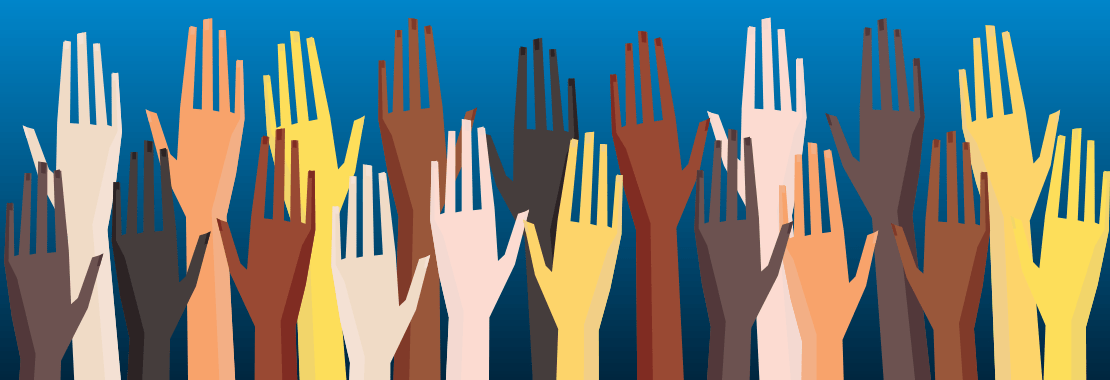Christal E. Carmichael is a Professor of Psychology at North Carolina Central University.
It takes a very strong and confident individual to identify, acknowledge and work to rectify an issue that forces us to look within. Doing the self-work can in many ways be uncomfortable. Yet that same discomfort and fortitude can be the catalyst for extraordinary progress and innovative transformation.
We’re in a unique space and time right now. Although I’d much rather share my perspective from a humanity standpoint, the current state of affairs boils down to the racial inequities that we face each and every day.
The great Irish poet William Butler Yeats once said, “It takes more courage to dig deep in the dark corners of your own soul and the back alleys of your society than it does for a soldier to fight on the battlefield.” One might ask, “what more can I do to right this wrong? What contributions can I make?” That question lingers for many of us. Fortunately for those of us who have dedicated our lives to educating others for the betterment of the world, we can affect powerful and impactful change.
Look Within
The first step is making yourself aware. Racism is a deeply ingrained part of our society. It’s become the norm, and we’re desensitized to it. That’s one reason why it continues to be so pervasive—some people don’t even recognize it.
Sometimes, we think we know more than we actually do. When it comes to racism, you cannot neglect the importance of being informed. Reading books and watching movies is just the beginning of the journey; it’s essential we learn about our own implicit biases, where they originated and how they impact our thinking and behavior.
Take Action
Once you become more aware of the injustices your students, their families and your co-workers of color face every day, you must involve yourself in fighting against these injustices. This includes—but isn’t limited to—speaking up whenever you witness racism. Always make known your stance for what’s right.
One way to start is by addressing and confronting head-on the discriminatory policies in your school and the policies you enforce in your classroom. This may be uncomfortable and difficult, but will be a valuable resource as you take those first steps.
The pain of racism has devastated our country for centuries. If you’ve seen the impact in your own community, then you’ve seen it in your classroom. As an educator, or anyone within higher education, there are many ways to both implement and demonstrate the fight against racial inequality.
Utilize Resources & Research
When thinking about the difficulty our students must face, I think of W.E.B. Du Bois, who coined the concept of “double consciousness,” whereby Black people are essentially forced to have two identities, and pressured to view themselves as they’re perceived by their non-Black peers. That psychology can create a unique circumstance for black students today—a psychology some researchers argue may even lead to mental-health problems that go unnoticed.
Many have confused the problem and shifted the focus to the aggression of Black students. But, this is where the problem lies. We can no longer expect our Black students to endure, using resilience and intellect, the experiences of racism and injustice they should never have had to face in the first place. These solutions often contribute to the even greater challenge of mental health in the African American community.
As mentioned earlier, it takes more courage to dig deep into the abyss of one’s soul. Fortunately, there is literally a world of information right at your fingertips to help you first acknowledge, then work to correct any unconscious or even conscious biases you may have never before felt the need to correct. We now have the opportunity before us to be the change we want to see to impact our students, our community and our world.
Lead by Example
Another solution as a leader and mentor in higher education is to lead by example. Among the critical practices for teaching leadership is to bring both cultural understanding and self-awareness into your classroom, your curriculum and your work. Actively challenging your own stereotypes and examining how you’ve responded to racism, oppression and injustice in the past, is another way to self-evaluate and make changes for the better.
Show students what it looks like to stand for what is right inside the classroom and beyond. Disconnection leads to dismissal; that’s one of the reasons why racism continues to be so pervasive.
How we approach the learning environment and curriculum will and should be very different from the ways we’re accustomed to. The approach to curriculum should be viewed and established from multiple lenses.
To be certain—now more than ever—we’re inviting an environment and demonstrating inclusion and belonging, we must recognize and address anything that looks or feels like injustice. Students long for an environment where they’re celebrated, recognized and supported. And, this is the environment that is most conducive to learning.
Speak Up
One of the most painful things we can experience is the deafening silence of the leaders and mentors we look up to, while an entire culture is suffering. No matter the circumstance, it’s never okay to look the other way when we see others being mistreated and/or abused. As leaders, educators and mentors, we must always confront and address racism in all forms, every single time.
Being forced to stand alone for what’s right can feel isolating, like the weight of the world is on our shoulders. But, when we have people we can admire, and we see them joining together in acts of solidarity, it sends the very clear message that we, as a society and as a community, will not tolerate racism and discrimination.
We can’t continue to stand by and watch this toxic dynamic continue. We all must say and do something.
Unsure how to approach tough-but-important topics in your classroom? Start with these strategies from educator Janet Mizrahi.

